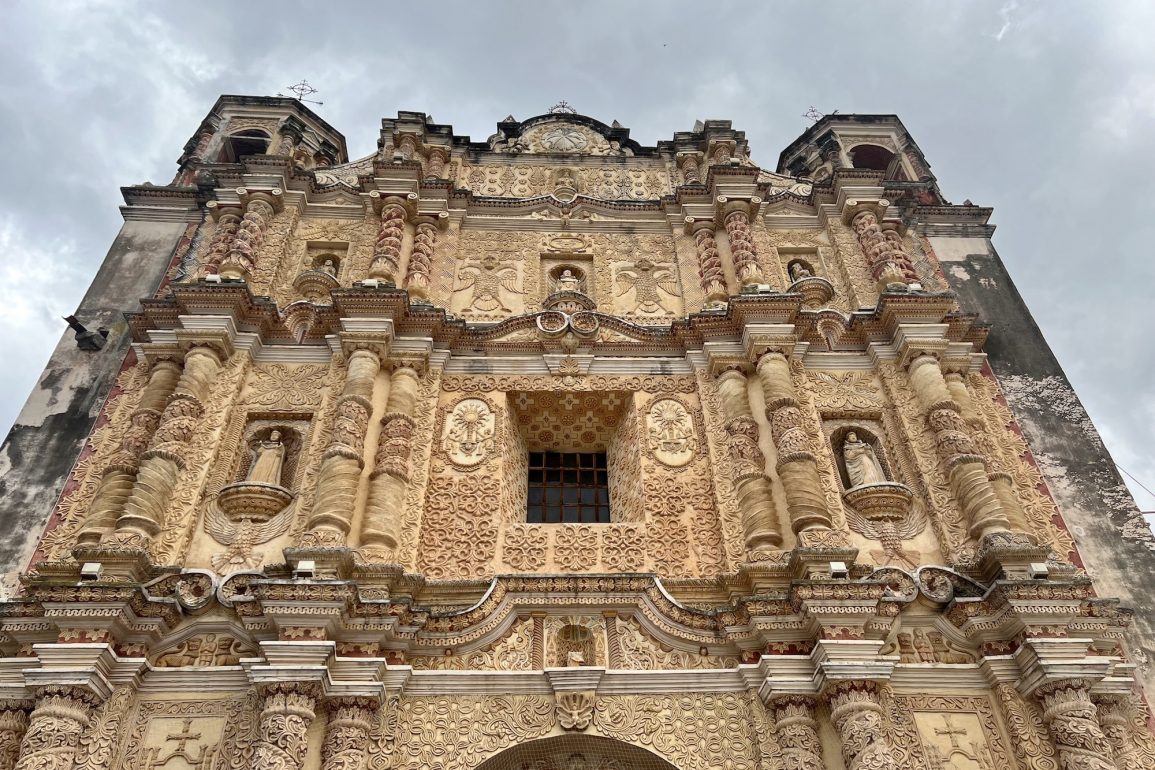Poppy’s Travel Diary – Mexico. Location – Mexico City/ San Cristóbal de las Casas
Having not previously visited Mexico, but heard a lot of positivity about the location, I was keen to embark on this adventure.
Flying from Heathrow airport our trip took us first to a stopover in Mexico City, so, although a cab journey from the airport to the exceptional Hotel Casa de la Luz did give us a first-hand view of the streets, shops, and locals, this was not enough to merit the city itself.
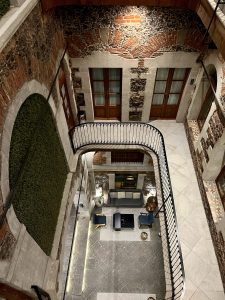
However, the unique hotel I would highly recommend, not only for the stunning interior design and clever use of natural brick and space styling the rooftop restaurant offering was superb with tasty, well-presented food. The staff were exceptionally friendly and courteous, although I later discovered that this seems to be the Mexican way!
Another flight and cab journey took us to San Cristóbal de las Casas, our designated location. This is a highland town in the southern Mexican state of Chiapas. It is known for its well-preserved colonial architecture, such as the centuries-old, yellow San Cristóbal Cathedral on the Parque Central. Los Altos Museum, in the baroque former Santo Domingo de Guzmán convent location that has regional history and unique textile exhibits. Outside the building, a market sells colourful weavings and other handicrafts, which once you get hooked will have you visiting time and time again.
As well as quaint cobblestone streets, and challenging pavements (high heels, I soon discovered was a no-no) these are just a few of the fascinating wonders that make San Cristobal de las Casas a must-visit addition to any southern Mexico travel itinerary.
Where to Stay
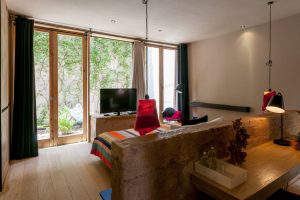
Bo Hotel – If you are looking for a luxury vacation, look no further. This hotel has plenty of style, tranquillity, class, and a huge personality. With its own library, gym, TV room, fountains, water features and an abundance of colourful flowers and trees. This is your wellness zone in one unique space. We stayed here for the duration of our visit and had the luxury of experiencing the Executive Room and the Garden Suite with its private terrace and breakfast area. I can highly recommend this destination for accommodation and food from their in-house restaurant Lum.
Where to Eat
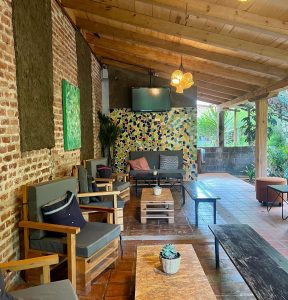
Sereno Art Hotel – this was a great find and turned out to be a top destination for cocktails, food and ambience. Beautiful decor and interior design, and certainly a must on your ‘where to eat list’
Cervecería Naufragio – Being somewhat picky with my pizzas, this turned out to be a fabulous spot as two of my favourite things, a pizza restaurant and a brewery. Not only do they make great pizzas the beers were first class too, with a super selection to experience. There are lots of tables and spaces to eat, including a garden, just keep walking through and you will find them.
Tierra y Cielo Restaurant. A superb dinner that was excellently executed. The presentation was very good. Flavour was super and a great menu choice.
Here you will find a regional cuisine restaurant that capitalises on the cultural richness, traditions, and natural resources of Chiapas.
Founded in January 2007, as part of the thesis project of the chef from Chiapas Marta Zepeda, who is a graduate of the Center for Higher Studies of San Ángel, CESSA. The chef seeks to make Chiapas cuisine a gastronomic tourist product, where sustainability and fair trade are promoted by supporting local producers, artisans, collaborators, and suppliers. Tierra y Cielo is recognized as the best restaurant in the state of Chiapas. Among his awards are the National Quality Award in 2015 and the recognition of the Conservatory of Gastronomic Culture of Mexico in 2017.
Sarajevo Café Jardin- a very positive eating and relaxing experience in a great environment. This is a Rustic-chic Cafe featuring a living wall of greenery and plants.
Highly recommended for the breakfast menu, everything we tried was first-rate, which is why we returned many times during our stay.
Malaak – Lebanese Restaurant.
This was our go-to restaurant which never let us down. First-class mezze on every visit and tasty cocktails too. A space that was full of Lebanese ingredients, aromas, and flavours of the highest quality.
Maho – If you were looking for an alternative cuisine, Maho is a Japanese restaurant where you can enjoy a variety of authentic Japanese dishes and drinks. Certainly, no complaints here…
To be honest the restaurant and café selection was excellent in quality and variety. Recommendations worked well and our hotel supplied us with a long list of potentials to visit (thank you Héctor Rodríguez) The presentation was good, the food fresh and tasty. Apparently, the fish and meat are generally brought to the city from other areas in Mexico, however, the fresh fruit and vegetables were locally sourced, which is reflected in the flavoursome taste.
Where to Visit
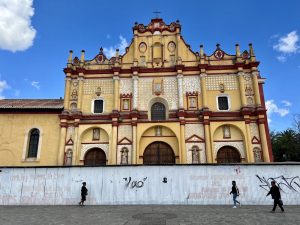
Catedral de San Cristobal de las Casas
One of the most impressive buildings (although temporarily closed) is the cathedral which has stood firm in the centre of the city for hundreds of years.
The elaborate cathedral was built over several centuries, incorporating Baroque and Moorish features into its design. Construction began in 1528 and throughout the centuries has been an emblem of the city. This 16th-century building has become one of the most important symbols of San Cristóbal, both for its architecture and for having been named the Cathedral of Peace.
It has been damaged over the course of several centuries, usually due to earthquakes. However, the famous wooden cross (the meeting point for almost any tour in the city) and the colourful yellow-red facade are always visible despite seemingly perpetual renovations.
Iglesia de Santo Domingo (temporarily closed)
The Temple and former convent of Santo Domingo is one of the most ornate churches in the city, overloaded with ornamental figures such as anagrams and
Siren as well as little indigenous angels and vegetable frets. Its facade features intricately carved sculptures and designs that were handcrafted on the orders of the Dominican friars who once lived here.
Dating back to the mid 16th century, the adjacent plaza of Santo Domingo is well known today for its indigenous handicrafts market. Surrounding the church are hundreds of market stalls, all selling unique works of art and carefully spun textiles.
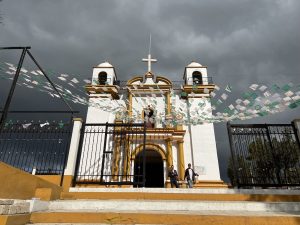 Chamula is a charming, quirky town approximately 30 minutes from San Cristobal and worth a visit, particularly on a Sunday when the local market is in full swing. It is also home to a church unlike any other, though you wouldn’t know it from the outside. The picturesque, centuries-old Iglesia San Juan has whitewashed walls and a brightly painted entrance that looks out upon the town square. Inside, however, worshipers engage in unique rituals that involve Catholic saints, moonshine, outpourings of emotion, and animal sacrifice.
Chamula is a charming, quirky town approximately 30 minutes from San Cristobal and worth a visit, particularly on a Sunday when the local market is in full swing. It is also home to a church unlike any other, though you wouldn’t know it from the outside. The picturesque, centuries-old Iglesia San Juan has whitewashed walls and a brightly painted entrance that looks out upon the town square. Inside, however, worshipers engage in unique rituals that involve Catholic saints, moonshine, outpourings of emotion, and animal sacrifice.
Upon entering you are overwhelmed by the aroma of copal resin incense and smoke from thousands of candles placed on bowing tables. The walls are lined with statues of saints adorned with mirrors to ward off evil. There are no pews; fresh pine needles carpet the otherwise empty floor from front to back.
Worshipers spread themselves out in small groups. Each family sweeps a space clear for themselves and adheres an assortment of candles directly to the tiles. They allow the candles to burn completely during and after their personal ceremonies, leaving behind puddles of multi-coloured wax. Worshipers pray aloud in Tzotzil, sometimes weeping and repeatedly making the sign of the cross. They drink Coca-Cola and “pox”—the regional distillate—and burp with the intention of evacuating malicious spirits. Sometimes the family is joined by a curandero who may lay their hands upon the afflicted, absorb their maladies into a chicken egg or cure them by waving a live hen overhead. In extreme cases, they then kill the chicken right there.
This unique blend of Catholic and indigenous beliefs is the result of 500 years of cultural competition.
The local Tzotzil people do not allow pictures to be taken inside the church. Those caught taking photos have had their cameras smashed in the past. In general, it is disrespectful to photograph indigenous people without permission in Chiapas.
The town itself for me had an eeriness, so perhaps I did not do it justice. It has its own unique cemetery at the main entrance, which was worth visiting.
El Arcotete
Located just 15 minutes away by taxi, El Arcotete is an eco-park that’s the perfect destination for hiking or walking or a general day out.
This beautiful tourist attraction features an interesting cave system with a large limestone archway and a freshwater river that runs right through the middle. The whole area is surrounded by pine trees and lush greenery where you can hike through the forest, spot wildlife in the trees, and enjoy the beauty of nature.
For the more adventurous try the zipline that stretches approximately 300 meters from one side of the valley to the other and you can get a cool perspective of the archway along the ride.
Orquideas Moxviquil
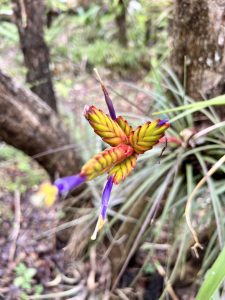

Stroll through the serene gardens, and greenhouses in this wonderfully calm area on the edge of San Cristobal de las Casas that’s teeming with orchids. There is also a walking route high in the hills giving you a super view of the city below. These Botanic Gardens are home to not only rescued orchids and other native plants but also endangered species of birds. If you are lucky, you may see the hummingbirds feeding on the plants, which is a wonderful moment.
Parque Nacional Cañón del Sumidero – Perfect if you are looking to escape the city for the day. In fact, this magnificent canyon is one of the major reasons why many tourists are inspired to visit the region, to begin with.
Sumidero Canyon is at least 1.5 hours away from San Cristobal de las Casas, and you can arrange a tour from the city that includes a cruise along the river.
Watch out for wildlife, including birdlife and crocodiles, in the trees and on the riverbanks, or simply gaze in awe as the canyon walls stretch high above you; in some places, they are up to 1,000 meters (3,280 feet)
Cañón Río La Venta, cascada El Aguacero
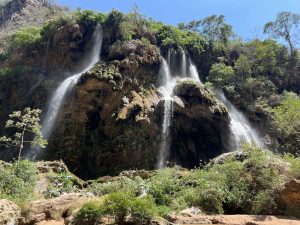

Museo del Ambar
As you explore the tourist attractions in San Cristobal de las Casas, you will notice that there’s a lot of amber on display and for sale.
If you’re intrigued as to why this is the case, look around the Museo del Ambar, where you’ll find out all there is to know about the region’s amber industry.
The museum has hundreds of exhibits, as well as a shop to purchase amber with a certificate of authenticity.
My newly learned facts about Amber are:
It floats in salt water
It can burn
It is reflective in the light
It is warm to the touch
It will not scratch
Rub it on the palm of your hand, it should give off the fragrance of a pine tree.
Highlights
I fell in love with the abundance of Amber, Jade and jewellery available to buy whether handcrafted from a street trader, from the market place or from designer shops and boutiques, the range was vast. Flora Maria was a brand I came across numerous times in San Cristóbal and her designs were stunning.
Flora María is a luxury jewellery brand that creates stories with a social transcendence, inspired by social and ecological causes. Created by Flora Maria Sanchez, who seeks to transmit culture and raise awareness through her pieces.
They work with .925 Sterling silver and a variety of natural stones from around the world. More than 30 years ago they started working with amber from Chiapas and implementing it in jewellery and today it is a central element in their pieces.
Each piece of jewellery is worked by a team of women, true artisans who contribute with their creativity and knowledge and are proud of their roots and culture and curious about the world around them.
Wallart- Not forgetting the amazing wall art, murals, and graffiti. It seems like all street corners tell a new story with the vast selection available for all to enjoy.
Poppy Watt

